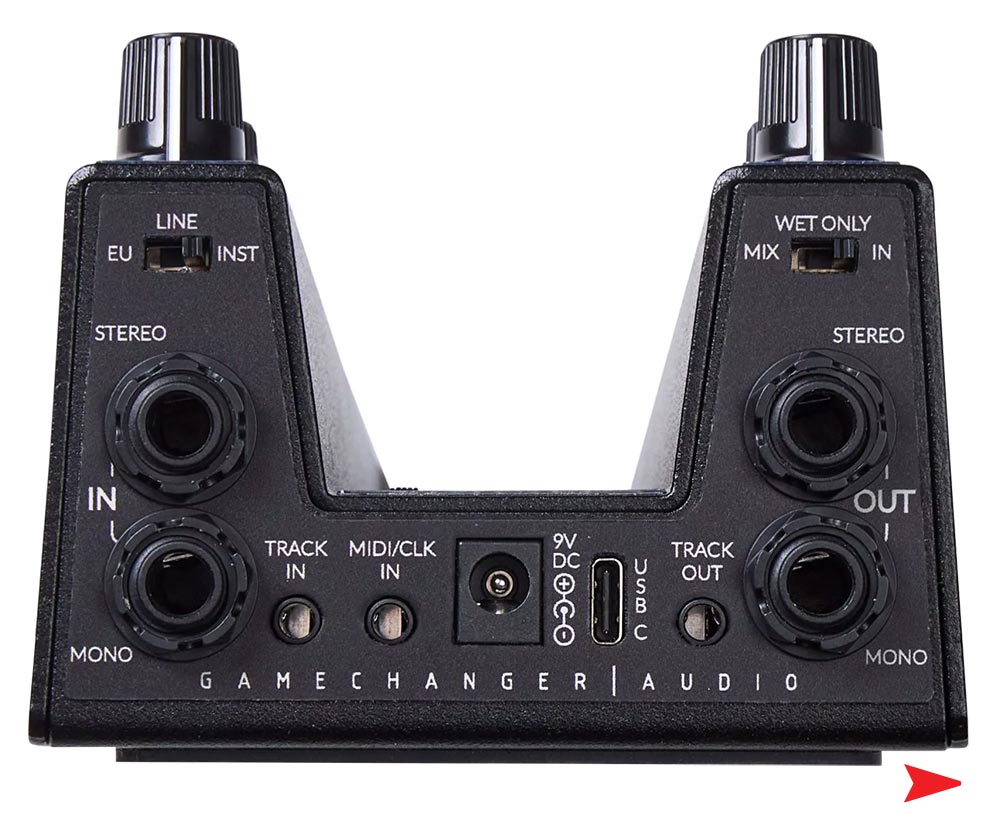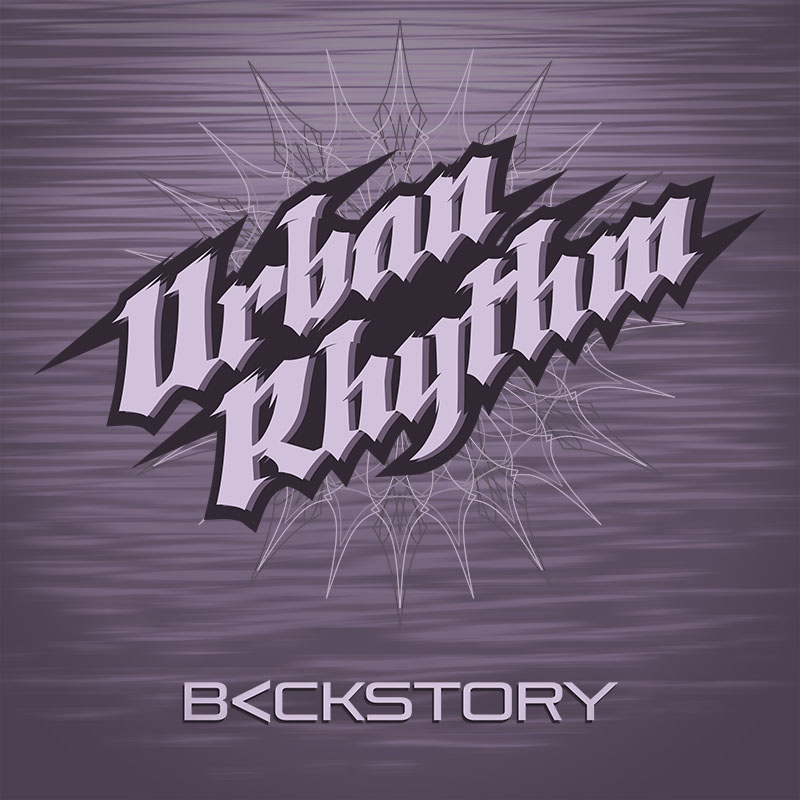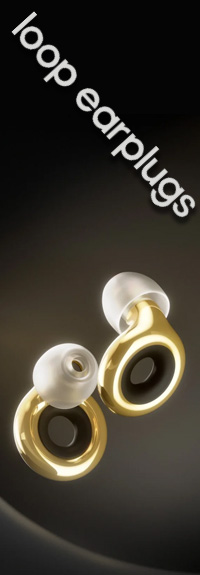Gamechanger Audio has relaunched their semimodular Reverb, Delay and Chorus pedals as the Auto Series, an innovative blend of classic guitar pedal design and modular synthesis that claims to be a complete reimagining of of what it means to be a guitar pedal.
The Auto Series asserts to transform a musician’s performance into an integral part of the sound effect. Players’ touch, dynamics, and note choices become the primary architects of sound, creating tones and textures that evolve in real-time with their performance. If the concept sounds familiar, you’re not mistaken. Back in February, the Gamechangers announced these same pedals as the Mod series. However, do to a legal snafu, they had to rename the pedals — pesky lawyers!
Gamechanger Audio Auto Series


The easiest way for electronic musicians to get their music onto Spotify, Apple Music, iTunes, Amazon Music, Tidal, Instagram, Facebook, TikTok, Pandora, Twitch & much more! Click the banner above or the Go Button to save 7% off of your signup! GO!
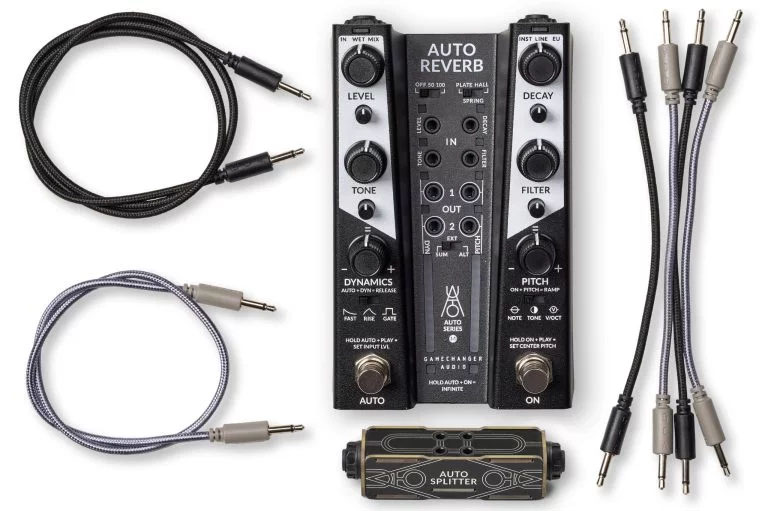
Each Auto Series pedal offers a vast range of foundational tones for each of their core uses, Chorus, Delay and Reverb. Gamechanger claims they “deliver exceptional quality, making them highly versatile and impressive standalone tools.” But there are enough Chorus, Delay and Reverb pedals on the market to go to the Moon and back. So Gamechanger leveled up.
Each pedal’s Auto Section has two on-board signal analysis engines, engineered to transfer musical nuances onto the effects parameters. The Dynamics tracker is fine-tuned to capture all details of playing dynamics, and animate parameters based on the player’s picking style as well as each instrument’s loudness and decay. The Pitch tracker detects note choices, and changes in the instrument’s tone. These Automations can be linked to any of the four effect knobs, setting the parameters in motion.
By introducing a new layer of parameter Automation that responds and reacts to the player’s touch, dynamics, and note choices, The Auto Series provides an unprecedented level of effects control and creative expression…
The Automation section is triggered with the Auto footswitch, allowing for Automations to be prepared with the patch cables and then toggled On or Off as needed. The small Parameter AutoMATION knobs directly below each of the main Effect Parameter knobs determine the amount of Automation and direction for each parameter individually. The Automation functions can be fine-tuned using calibration and several effect engagement modes.
The Auto Series Pitch and Dynamics trackers claim to be precise and versatile, tailored for all styles of guitar playing, as well as synthesizers. All pedals feature an input level switch that lets you choose between instrument level, line level, and Eurorack synthesizer level input. Drawing inspiration from the world of modular synthesis, each pedal’s unique patchbay interface allows to create a straightforward and robust connection between the two on-board trackers and any of the effects parameters using 3.5mm (1/8 inch) jack patch cables.

Targeted at sound explorers, the Auto Series offers a combination of easy-to-use interfaces and profound sound manipulation possibilities. The series challenges musicians to delve into their creativity and discover extraordinary sounds beyond the usual.
Each Auto Series pedal package includes four short patch cables for patching Automations on the pedal, two long patch cables for cross-patching with other Auto Series pedals and external gear, and a specially designed Signal Splitter to be used under a pedalboard for advanced Automation routing.
The Auto Series pedals contains features that support both stereo and mono signal processing — with stereo routing achievable via two TS mono cables or TRS stereo cables. Input levels can be switched between Instrument, Line, or Eurorack settings. Even the Effect Level knob offers three distinct configurations: Input (effect send amount), Wet (effect send with wet only output), or Mix (dry/wet mix mode). ?Additionally, the pedals include dedicated Track inputs and outputs, for routing a clean signal into the Automation engines, a MIDI/CLK input for MIDI clock or analog trigger synchronization for time-based effects, and a USB-C input that allows powering the pedal, sending firmware updates and controlling all parameters via MIDI over USB.
Gamechanger Audio Auto Delay Features:
- TAPE algorithm mimics the tone control section, tape saturation, and compression of a vintage tape echo. We have deliberately not emulated the typical wow and flutter effects associated with tape delays, as these sounds can be achieved by automating the TIME parameter in numerous ways.
- ANALOG algorithm replicates the tonal response of a vintage high-quality studio bucket-brigade delay. Automating the TIME parameter while the REPEATS level is set high produces classic and warm pitch-shifted delay tails.
- DIGITAL algorithm is intended to be used when the delay signal needs to be precisely the same as the input signal without any signal coloring. Clear and spectrally precise repeats with the TONE knob set in the center position with the ability to automate the tone to become darker or brighter.
- REPEAT determines the number of repeats. The lowest setting produces zero repeats. When turned completely clockwise, the delay goes into an infinite feedback loop.
- TONE controls the coloration of all currently sounding delay tails. The character of the TONE circuit is dependent on the selected algorithm.
- TIME adjusts the delay time from 40 milliseconds to 2 seconds.
Gamechanger Audio Auto Delay Features:
- PLATE algorithm is characterized by slightly metallic and bright overtones typical of studio plate reverbs. The bright overtones can, of course, be tamed or exaggerated with the TONE and FILTER knobs.
- SPRING algorithm precisely mimics the drippy response of guitar amplifier spring tanks. The tonal response is even more metallic than the PLATE reverb.
- HALL algorithm can place your input signal in a physical space—from small reverb chambers to infinitely huge halls. The smooth diffusion can achieve synthesizer pad-type sounds on high DECAY settings.
- DECAY is used to adjust the length of the reverb. The maximum setting produces an infinitely-long decay.
- TONE control adjusts the tonal character of reverb engine on the input stage, mimicking a change in the resonator’s physical properties. Adjusting or automating TONE will apply to all incoming signal without affecting the active reverb tails.
- FILTER adjusts the reverb engines’ output signal. Contrary to the TONE knob, adjusting or automating FILTER will boost and/or shave off frequencies from the already-sounding reverb tails.
- Press and Hold both ON and AUTO footswitches for INFINITE DECAY, which momentarily extends the existing reverb DECAY into infinite reverb tails. Once you release both footswitches the reverb tails will decay over the currently set DECAY time.
- STEREO SPREAD switch determines the reverb width in stereo setups: OFF – Mono reverb; 50 – Medium stereo spread; 100 – Full stereo spread.
Gamechanger Audio Auto Chorus Features:
- CHORUS algorithm is a classic simple chorus effect that mixes the dry sound with a delayed and pitch-shifted signal. For a pure vibrato effect, set the LEVEL KNOB MODE to MIX, set the LEVEL knob completely clockwise, and set the FEEDBACK knob completely counter-clockwise.
- ENSEMBLE algorithm is a more lush version of the chorus. This algorithm mixes the dry signal with three slightly offset and pitch-shifted signals. This ensures that in the higher DEPTH setting, the internal modulation rate remains less audible than in the CHORUS algorithm.
- FLANGE algorithm shortens the delay of the chorus effect to achieve the typical jet-engine-like effect.
- RATE adjusts the modulation range from 0 Hz to 819.16 Hz. When turned completely counter-clockwise, the pedal stops modulating the delay line and the effect is stuck on a static delay time controlled by the DEPTH knob. When the RATE is set to 0, the DEPTH knob allows you to dial in various comb-filtering sounds.
- DEPTH control. The minimum counterclockwise setting is no modulation depth, which means that the wet signal has a constant short delay (since CHORUS and FLANGER are delay-based effects). This means that even if the modulation depth is zero, you can still use the FEEDBACK control to shape the wet sound.
- FEEDBACK level adjustment. High settings introduce a metallic resonant character that is dependent on the selected algorithm. The maximum setting pushes the effect into an infinite feedback loop.
- The AUTO CHORUS features an innovative approach to the tap tempo function: TRACK TEMPO. Push and hold both footswitches at the same time. The pedal uses its dynamic tracking capabilities to determine the tempo of strumming and sets the RATE parameter value accordingly.
- The MODULATION SHAPE switch offers three distinct modulation shapes: SAW, SINE, and RAMP.
Urban Rhythm — Backstory — New Release!
“Urban Rhythm serves as a testament to the limitless frontiers of sonic artistry, where the boundaries of imagination dissolve into a realm of poetic resonance and artistic revelation.”
Spotify | Apple Music | iTunes | Deezer | Amazon
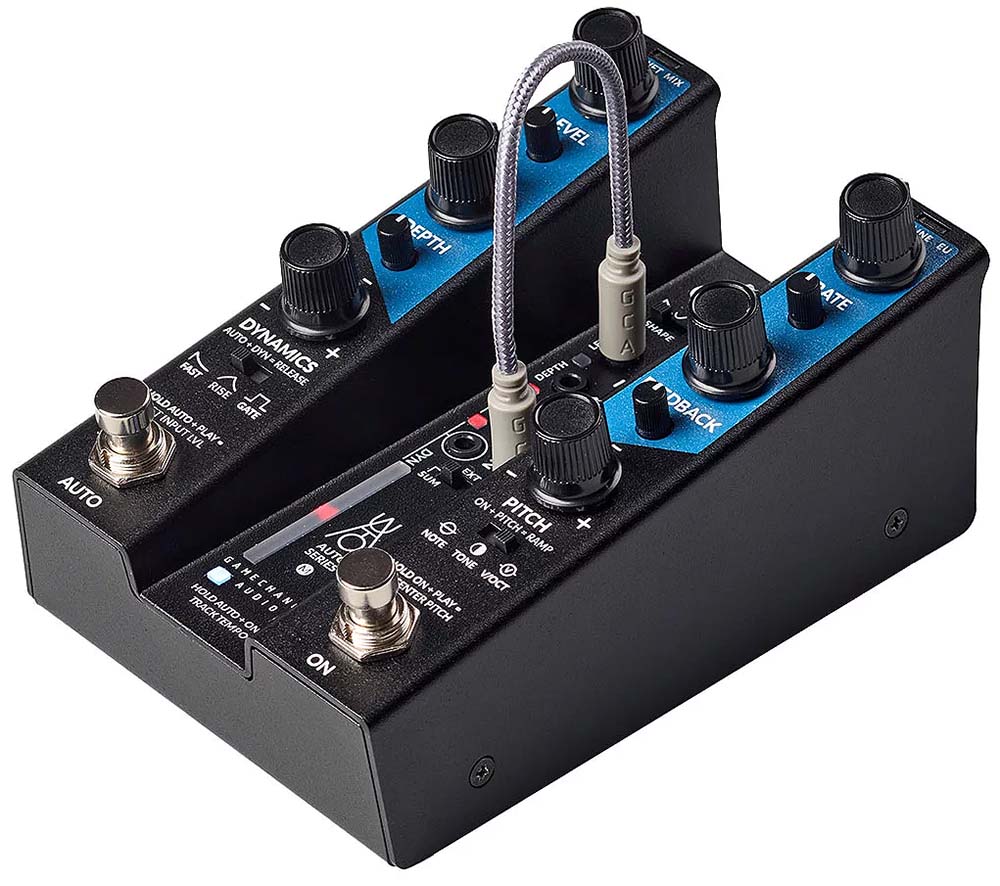
Gamechanger Auto Feature List:
- TS cables (L/MONO) for mono input (TS), and mono output (TS).
- Single TS input to dual TS output, dry input is present in both output channels.
- Single TS input to stereo TRS output, dry input is present in both output channels.
- Dual TS input to dual TS or TRS stereo output.
- TRS stereo input (R/TRS) for stereo input to stereo output (TRS).
- Dual TS or TRS stereo input to mono output, dry input is mixed to mono output.
- Hold ON and play to set the center pitch.
- Hold AUTO and play to set the “center” input level, called the Dynamics Threshold.
- These calibrated values will remain saved until new ones are added to replace them.
- The INPUT Level switch changes the internal headroom to ensure optimal performance with various signal levels. The OUTPUT jacks follow the INPUT Level. It can be set to Instrument (4Vpp max), Line (8Vpp max) or Eurorack (12.5Vpp max) levels.
- Hold AUTO and play to set the “center” input level, here called the Dynamics Threshold.
- The FAST Dynamics mode instantly follows the attacks of your input signal as soon as it exceeds the Dynamics Threshold. This mode is useful for automations that directly follow playing dynamics.
- The SLOW Dynamics mode gradually follows playing dynamics. This is useful for gradual parameter value automation even when playing dynamics change quickly.
- The GATE Dynamics mode outputs either no control signal when the input signal is below the Dynamics Threshold level or a maximum control signal when the Dynamics Threshold is exceeded. This mode is useful for instant changes to the effect parameters without any attack or decay times.
- Hold ON and play to calibrate the Center Pitch.
- The routing signal, also known as the control voltage, allows the routing system to provide both the direction and intensity information in one cable.
- The NOTE Pitch mode allows to dial in control voltage that only responds to specific note ranges. When the PITCH knob is in the center position, the Center Pitch note will produce a control voltage at full strength, and all other notes will produce zero control voltage.
- The V/OCT Pitch mode follows your note choices. If you play notes up from the chosen Center Pitch the AUTOMATION output will produce a positive control voltage. The higher the note, the stronger the control voltage. Positive control voltage is indicated by a blue bar from the Center Pitch in the Pitch Meter. Playing below the Center Pitch will produce exactly the opposite effect – negative voltages proportional to the interval below the Center Pitch indicated by a red bar in the Pitch Meter. If you play the exact note that is set as the Center Pitch, the AUTOMATION output will be 0 volts, in other words – no automation.
- The TONE mode is different from the V/OCT and NOTE modes in that it analyzes the overall frequency spectrum rather than detects exact pitches. The TONE mode detects the overall input signal tone – how dark or bright it is and outputs control voltage accordingly. This mode is useful when creating automation based on the general pitch range and the overall color of the tone. It can detect differences in signals between neck and bridge pickups of the same guitar and various positions of the tone knob on a guitar.
- The entire automation section is engaged with the AUTO footswitch. This allows for the automation to be routed and then toggled ON or OFF as needed.
- Four smaller knobs of PARAMETER AUTOMATION determine the direction and intensity of the routed automation. Also known as attenuators, they allow for nuanced control of the relationship between pitch, dynamics, and setting the parameters in motion.
- The routing signal is also known as the control voltage. This allows the routing system to provide both the direction and the intensity information in one cable.
The default operation is the SUM mode in which the control voltage produced by the AUTOMATION outputs are summed to the PARAMETER values. The small PARAMETER AUTOMATION knobs determine the direction and amount of the control voltage summed to the PARAMETER value. For example, if the LEVEL knob is set in the center position and the small LEVEL AUTOMATION knob is turned clockwise, then the control voltage from DYNAMICS will virtually turn the LEVEL knob clockwise. But if the small LEVEL AUTOMATION knob is turned counter-clockwise, then the LEVEL knob will also be virtually turned counter-clockwise. - The ALT mode changes the small PARAMETER AUTOMATION knob functionality to alternative parameter values. When the AUTO footswitch is engaged, the small PARAMETER AUTOMATION knobs replace the main PARAMETER knobs. The automations in this mode modulate the parameters from the small PARAMETER AUTOMATION knob values back to the main PARAMATER knob values.
- The EXT mode allows you to route in an external control voltage signal, such as an LFO from a synthesizer, to automate the PARAMETERS and modify the external modulation signals using the DYNAMICS and PITCH.
- This switch changes the LEVEL knob functionality and the wet & dry signal routing.
- IN – the LEVEL knob determines the loudness of the signal fed into the effect. The dry signal is always at full volume.
- WET – Similar to the IN mode, the LEVEL knob determines the loudness of the signal fed into the effect, but the dry sound is removed from the mix.
- MIX – the LEVEL knob determines the mix between dry and wet signals. Counter-clockwise for dry only, center for an equal mix of dry and wet signals, clock-wise for wet only.
- The package includes an AUTO SPLITTER that can be placed at any point of the signal chain to provide a tracking input signal.
- The primary use of the TRACK IN is to route clean guitar or another instrument signal for DYNAMICS and PITCH analysis. Meanwhile, the effect is applied only to the main AUDIO INPUT signal. TRACK IN is a 3.5mm (1/8″) TRS socket – Track signal insert (L/R).
- The TRACK OUT passes the TRACK IN signal through to route it to another AUTO SERIES pedal or elsewhere. TRACK OUT is a 3.5mm (1/8’’) TRS socket – L/R output or track signal buffered output
- If no cable is plugged into the TRACK IN, then TRACK OUT outputs dry mono or stereo AUDIO INPUT.
- It is also possible to use TRACK IN input when nothing is plugged in the main AUDIO INPUTS. This is useful for integrating the AUTIO SERIES pedal in a Eurorack synthesizer setup without using adapter cables.
- Powered by a standard 9V center negative power supply of at least 250 mA. The pedal can also be powered via USB-C (5V 1A).
- Compatible to use with Eurorack signal in the patch bay:
- — CV In is from -5 to +5 V;
- — CV Dynamic Out is 0 to +5 V;
- — CV Pitch Out Note Mode is 0 to +5 V;
- — CV Pitch Out Tone Mode is -6 to +6 V;
- — CV V/Oct Out Mode is -6 to +6 V.
- MIDI/CLK IN accepts 3.5mm (1/8’”) MIDI B-Type or TS Trigger input.
- Input impedance is 200 Ohm, buffered 5V clock signal expected.
- USB-C accepts MIDI Protocol 1.0.
- Future firmware updates will be possible via USB-C.
- Digital Audio ADC/DAC at 24b/32b, 44.1kHz sample rate.
